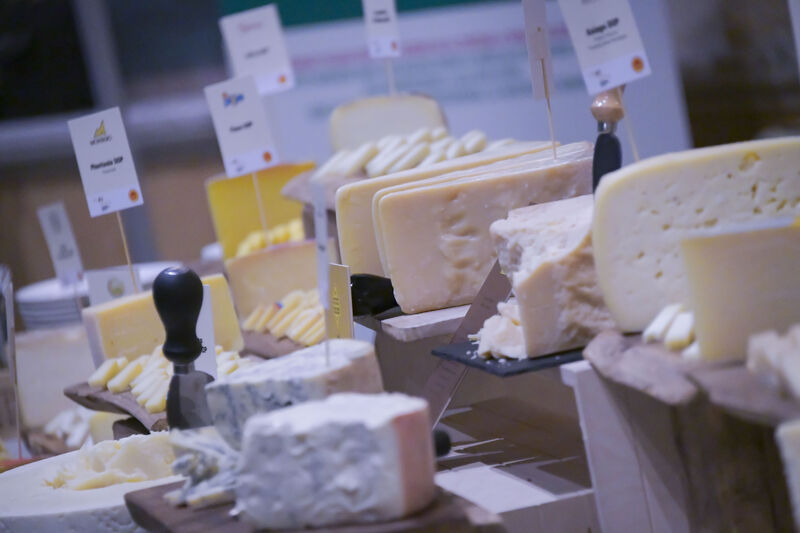ITALIAN D.O.P. and I.G.P. CHEESES ASSOCIATION
AFIDOP
THE ITALIAN DAIRY EXCELLENCES
AFIDOP
D.O.P.
Cheeses
AFIDOP
I.G.P.
Cheeses
P.D.O. AND P.G.I. CHEESES
The Italian dairy excellence
P.D.O. and P.G.I. cheeses they represent the best of quality certified and protected by the EU.
Italian PDO and PGI cheeses are deeply rooted in the history and legacy of our country. Their fame is closely tied to the region where they were born or crafted and is owed to the skillful and tireless work of our ancestors—those who preserved and passed down to new generations a unique and inimitable expertise in transforming milk.

The Association AFIDOP
AFIDOP (Italian PDO and PGI Cheeses Association) was founded in April 1994 and brings together and represents the main Consortia for Protected Designation of Origin (PDO) and Protected Geographical Indication (PGI) cheeses produced in Italy. From large-scale to small-scale productions, the association covers nearly all certified cheeses made in Italy, representing a vast and highly representative sector.


P.D.O. AND P.G.I. CHEESES
PDO and PGI cheeses represent the best of certified dairy production in the European Union. Italy has 56 certified cheeses, 53 PDO and 3 PGI, producing over 580,000 tons of dairy products with a value exceeding 4.6 billion euros.
NEWS AFIDOP

9
May
2024
The Guidelines arrive at a favorable time for consumption outside the home. Despite inflation and the uncertainty of the...
Read more
The Guidelines for the Enhancement of DOP and IGP Cheeses in Catering Menus presented today at Cibus by AFIDOP...
Read more
“The consolidated text approved today represents the right synthesis of a positive, complex path shared by all EU countries:...
Read more
10
Nov
2023
The protagonists of the national milk supply chain, together with some of the leaders of European agricultural policy, will...
Read more
Catering focuses on cheese: finally a dedicated menu? The history of cheese dates back over 18,000 years to Mesopotamia....
Read moreSearch for cheeses based on their Name, geographical Area of origin and type of Milk…
(For each cheese you will also find a recommended recipe proposal)
RECOMMENDED RECIPES...
SALAD WITH CLEMENTINES, POMEGRANATE AND CACIOCAVALLO SILANO DOP CHEESE
Live peel 4 clementines and slice them, collecting the emitted juice in a small bowl. Squeeze the remaining clementine and combine the juice with the previous one. Add a pinch of salt, mustard, honey and 4 tablespoons of oil and emulsify the ingredients with a fork or small whisk. Pull off the salad leaves, wash them, dry them, cut them in half lengthwise and arrange them on 4 plates. Combine the clementine slices, the Caciocavallo Silano Dop deprived of its rind and cut into cubes about 2 centimeters on a side, the beans taken from the pomegranate and the coarsely chopped pistachios. Season with the prepared citronette and sprinkle with the mint leaves and chopped chives.
DISCOVER THE COMPLETE RECIPE
VANILLA PINEAPPLE CARPACCIO WITH PUNTARELLE AND PIAVE MEZZANO DOP
Clean the puntarelle, reduce them to julienne, soak them in cold water for 20 minutes, drain and repeat the step 2 more times. Clean the pineapple and cut it into very thin slices with a very sharp knife or slicer. Place it in a large dish, sprinkle with sugar mixed with the seeds contained in the vanilla bean, and marinate for 15 minutes. Drain the pineapple from the marinade and arrange it on the plates, add the drained, dried and seasoned puntarelle with a pinch of salt, the chopped almonds and the Piave Mezzano Dop cut into thin slices. Season with a drizzle of oil.
DISCOVER THE COMPLETE RECIPE
CABBAGE, POTATO AND MONTASIO DOP STRUDEL
Mix the flour with 0.8 dl of warm water, a tablespoon of oil, a pinch of salt and the vinegar until a soft dough forms. Transfer to a bowl, brush with oil, cover and let stand 1 hour. Melt 20 g of butter in a small frying pan, add the breadcrumbs and toast them over a low flame until they turn a hazelnut color. Peel the savoy cabbage and cut it into strips, peel the potatoes and cut them into cubes, remove the rind from the Montasio DOP and dice them, peel the onion and cut it into thin slices. Cook the potatoes and savoy cabbage in boiling salted water for 7-8 minutes, stew the onion with 10 g butter, add the carefully drained savoy cabbage and potatoes and let it season on a low flame for 7-8 minutes. Allow to cool. Roll out the dough into a very thin rectangular sheet and transfer to a sheet of baking paper. Sprinkle with the toasted breadcrumbs leaving the edges free, cover with the savoy cabbage mixture and the Montasio AOC, close inward the edges of the long sides and roll the dough over the filling. Transfer the strudel to a baking sheet lined with baking paper and bake in a preheated oven at 190° for 30 minutes.
DISCOVER THE COMPLETE RECIPE
CHESTNUT MALTAGLIATI WITH PECORINO SARDO DOP CHEESE AND MARJORAM
Knead 00 flour with durum wheat flour, sifted chestnut flour and 2 dl water for 7-8 minutes, form into a ball, wrap in clingfilm and let rest for 30 minutes. Pour the grated pecorino cheese into a bowl and add the grated zest of half a lemon, the leaves of 4 sprigs of marjoram finely chopped and 4-5 tablespoons of oil. Roll out the dough into a sheet about 2 millimeters thick and with a serrated pastry cutter cut out lozenges. Cook them for 2-3 minutes in boiling salted water, take a ladleful of the pasta cooking water, let it cool and mix with the pecorino mixture. Drain the pasta leaving it moist, pour it into the bowl, stir quickly and serve with the remaining marjoram leaves and the sweet Pecorino Sardo DOP cut into wedges.
DISCOVER THE COMPLETE RECIPE
Activity carried out with the contribution of MASAF DM. No. 0311498 of 15 June 2023
 |





















